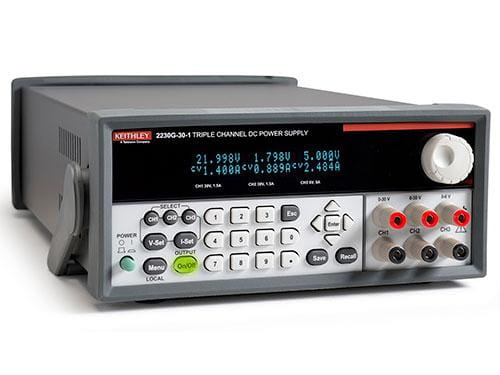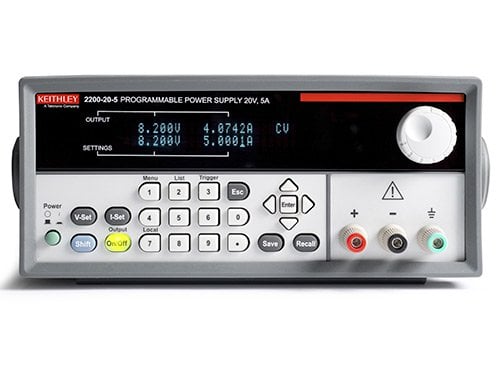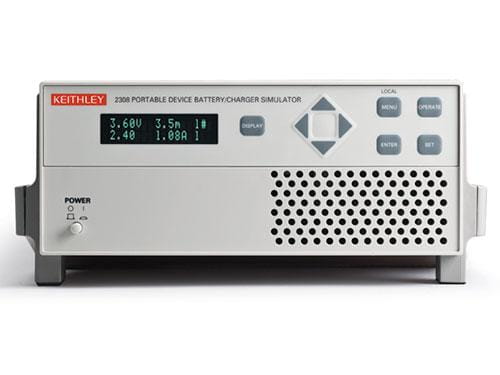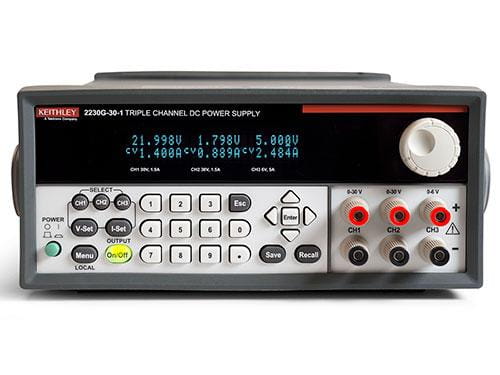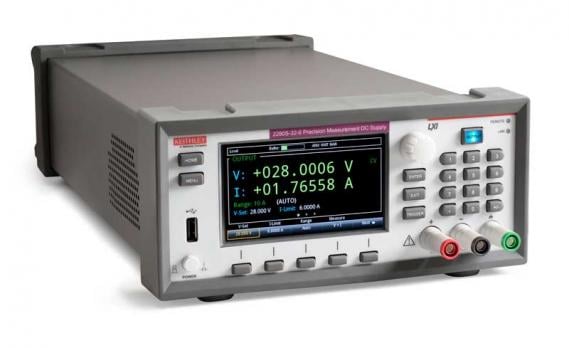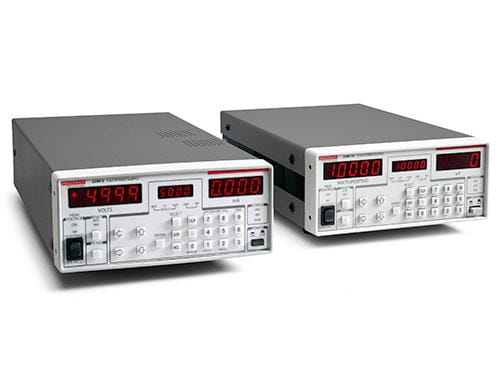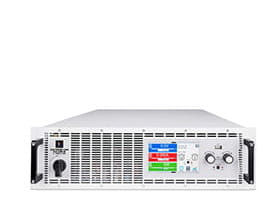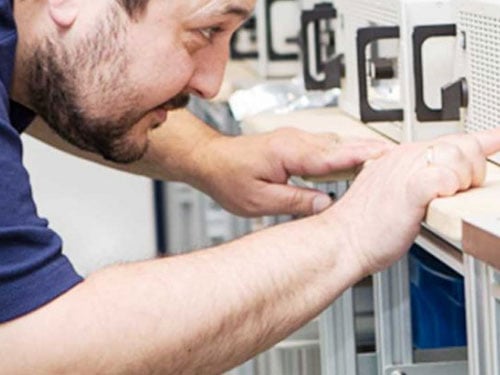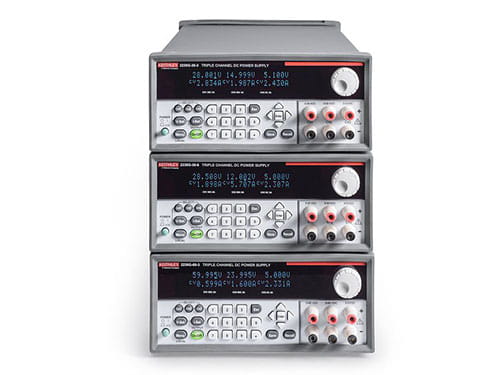联系我们
与泰克代表实时聊天。 工作时间:上午 9:00 - 下午 5:00(太平洋标准时间)。
致电我们
工作时间:上午9:00-下午5:00(太平洋标准时间)
下载
下载手册、产品技术资料、软件等:
反馈
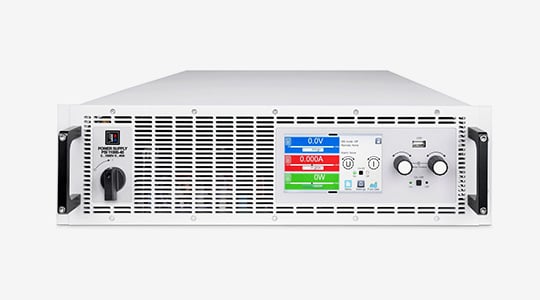
推荐直流电源产品
EA-PSI 10000 系列:高精度,高性能
EA-PSI 10000 系列具备高精度、可调输出、高效率以及自动量程功能,专为研发、生产和自动化测试应用设计。
- 稳定且可编程的直流电源 – 精准的电压和电流控制
- 自动量程提升灵活性 – 在不同电压等级下实现最大功率输出
- 高效率 – 降低能源浪费和废热输出
- 远程可编程 – 支持以太网、USB 和 CAN 接口,满足自动化测试需求
为您的应用选择合适的直流电源
通用型电源
电池测试与模拟
大功率与特殊应用
通过直流电源优化您的工作流程
直流电源为测试、原型设计和生产流程提供稳定、可调的电压和电流。无论您是在教育、科研还是工业环境中,高质量的直流电源都能确保精准且可重复的测试结果。观看视频,了解它如何优化您的测试流程。
工程师如何在使用泰克公司直流电源设备时取得成功

为电路提供精准电源
您的测试系统真的足够准确吗?除了数据手册中的参数外,负载调节、远程感测和布线等因素都会对电路或设备所获得的电压产生显著影响。了解如何正确解读精度指标,并通过远程感测等技术手段,提升测量的准确性和一致性。
拓展学习资源
简化您的电池测试系统配置
使用一台双向电源设备即可取代独立的电源和电子负载,简化电池测试流程。Tektronix 提供的解决方案支持充放电无缝循环,增强测试安全性,并通过能量回收有效降低测试成本,满足您对先进电池测试的多种需求。
拓展阅读资源


通过自动量程功能提升测试自动化效率
无需为每一个被测设备(DUT)频繁更换电源!观看此视频,了解 EA 真正的自动量程技术如何让一台电源支持更多测试对象,最大限度提升测试自动化系统的灵活性与效率。
拓展阅读资源
直流电源测量专家指南
电源设计的 10 个关键阶段
设计一个可靠的电源系统需要细致的规划、精准的测试以及合适的工具。本《电源测量小贴士》将带您全面了解电源设计的 10 个关键阶段——从元器件选型到电磁干扰(EMI)排查,再到最终验证,助您打造高性能解决方案。无论您是在优化效率、确保符合标准,还是排查问题,这些专家建议都将助您提升整体性能、加快产品上市进程。如果您正在选购新的电源产品,这些建议也能为您提供选型参考。毕竟,优秀的电源不仅仅体现在参数上,更在于您如何测试和完善设计。
如何选择合适的直流电源
面对众多选项,选择直流电源可能让人不知从何下手。但如果从应用场景和关键功能入手进行筛选,决策将变得更为轻松。以下是选择电源时需要考虑的几个关键要素。
第 1 步:明确应用场景
在查看技术参数之前,先明确你的实际应用需求。
- 通用电子测试 —— 标准的台式直流电源即可满足需求。
- 电池测试或模拟 —— 需要具备双向功能或内置电池模拟功能的电源。
- 大功率应用 —— 若用于测试电动车组件或工业设备,则应选择高电压、大电流或具备自动量程功能的电源更为合适。
第 2 步:关键选择标准
单通道 vs. 多通道输出
- 单通道电源适用于仅需单一电压源的基础测试应用。
- 多通道电源适合测试需要多个电压等级的电路,可减少对额外设备的依赖,提高测试效率。
电压、电流与功率容量
- 确保所选电源能够覆盖测试中所需的最大与最小电压、电流范围。
- 具备自动量程功能的电源可根据负载需求动态调整电压与电流输出,在整个功率范围内实现更大的灵活性与覆盖能力。
精度与稳定性
- 分辨率与准确度决定了电压和电流可调节的精细程度,是高精度测试中至关重要的指标。
- 纹波与噪声会影响信号完整性,尤其是在模拟或射频等对电源纯净度要求较高的应用中。
可编程性与自动化能力
- 基础控制接口(如 USB、LAN 或 GPIB)足以满足常规自动化测试系统需求。
- 高级功能如序列控制、任意波形生成和可编程负载曲线,可支持更复杂的测试场景。
- 模拟与数字 I/O 接口支持与外部控制系统集成,实现灵活联动控制。
第 3 步:针对特定应用的专业功能
- 电池仿真与测试 — 能够模拟电池行为的电源,有助于更准确地测试设备的功耗与能效表现。
- 双向可编程电源 — 既可供电也可吸收电流,非常适合用于储能系统以及电动车电池充放电循环等应用场景。
- 高电压电源 — 如半导体测试、绝缘击穿分析等应用,通常需要支持 1kV 及以上输出能力的电源产品。
第 4 步:考虑长期使用价值
选择电源不应只着眼于当前需求,更应兼顾未来的测试灵活性与设备寿命。
- 可扩展性 — 这款电源未来是否还能满足更复杂的测试需求?
- 多功能性 — 是否可覆盖多个应用场景,避免过于专用导致资源浪费?
- 耐用性 — 是否具备长期高精度输出与可靠性能?
不确定哪款直流电源最适合您的应用?
直流电源常见问题FAQ
直流电源和交流电源有什么区别?
哪些行业使用直流电源?
直流电源被广泛应用于多个行业,包括:
- 电子及半导体测试——用于电路验证、元件特性分析及故障诊断。
- 汽车及电动汽车(EV)——关键于电池测试、动力系统验证及逆变器测试。
- 航空航天及国防——用于航空电子设备、雷达及卫星系统的高精度测试。
- 医疗设备——支持植入式及便携式医疗电子产品的开发与测试。
- 可再生能源——关键于太阳能电池板、燃料电池及储能系统的测试。



